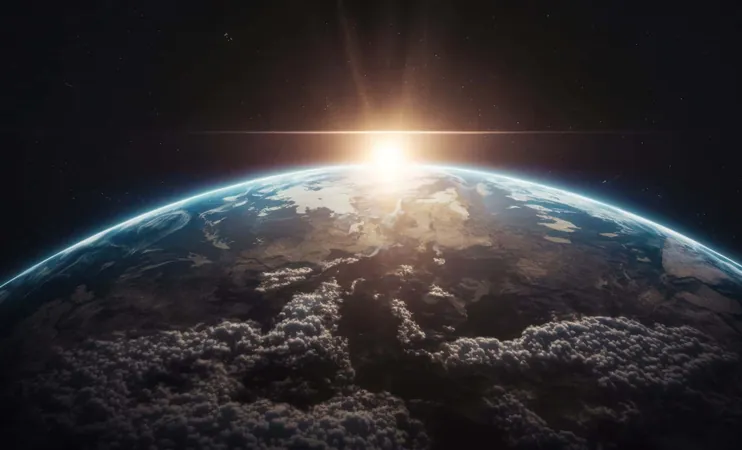
Scientists Warn: Earth Faces Catastrophic Oxygen Decline—What This Means for Our Future!
2025-06-02
Author: Yan
A Dismal Prediction for Earth's Atmosphere
In a groundbreaking study featured in *Nature Geoscience*, researchers have unveiled a grim forecast for Earth’s atmosphere that could spell doom for complex life forms. It’s predicted that over the next billion years, oxygen levels could plummet to a staggering million-fold decrease, mirroring the planet's conditions before the Great Oxidation Event that occurred 2.4 billion years ago. These alarming projections stem from detailed models analyzing the sun’s intensifying brightness and its effect on Earth’s geochemical cycles.
The Sun's Role in Our Atmospheric Future
The escalating heat of the Sun significantly influences the evolution of Earth’s atmosphere. As the sun grows hotter, it alters our carbon cycles, particularly the carbonate-silicate cycle, which plays a critical role in maintaining atmospheric carbon dioxide (CO2) levels. Kazumi Ozaki, an environmental scientist from Toho University, articulates the troubling consequences: 'The lifespan of Earth’s biosphere, governed by our sun and carbon cycles, suggests a continuous drop in atmospheric CO2 and subsequent global warming over geological timescales.' This decline in CO2 levels threatens photosynthesizing organisms and, in turn, diminishes oxygen production, triggering radical changes in our planet's habitability.
Impending Oxygen Catastrophe and Its Implications
The findings from this research forewarn an imminent collapse in oxygen levels far before Earth transitions into a ‘moist greenhouse’ climate or loses significant surface water. The study's models indicate that atmospheric oxygen will drastically drop, reaching a level about a million times lower than today. Chris Reinhard, an Earth scientist from Georgia Tech, describes this phenomenon: 'The drop in oxygen is extremely severe. We’re talking about a million times less oxygen than we currently have.' This catastrophic decline presents a fatal blow to most life forms that depend on oxygen, signaling the potential extinction of complex ecosystems and a shift towards anaerobic organisms.
Rethinking Life Beyond Earth
Moreover, this startling research has profound ramifications for astrobiology and the quest for life on distant exoplanets. Traditionally, oxygen has been viewed as a vital indicator of life. However, if oxygen-rich environments are merely fleeting phases in the life of habitable worlds, scientists may need to revise their criteria for identifying viable extraterrestrial life. Interestingly, Earth's oxygenated era could account for only 20-30% of its total habitability. This implies that planets with low or even nonexistent oxygen levels could still harbor some form of life. The future Earth is projected to possess an atmosphere dominated by methane, low in CO2, and lacking an ozone layer, conditions most conducive to anaerobic organisms. This challenges the conventional notion of oxygen as the gold standard for biosignatures and expands our understanding of where to look for life in the universe.



 Brasil (PT)
Brasil (PT)
 Canada (EN)
Canada (EN)
 Chile (ES)
Chile (ES)
 Česko (CS)
Česko (CS)
 대한민국 (KO)
대한민국 (KO)
 España (ES)
España (ES)
 France (FR)
France (FR)
 Hong Kong (EN)
Hong Kong (EN)
 Italia (IT)
Italia (IT)
 日本 (JA)
日本 (JA)
 Magyarország (HU)
Magyarország (HU)
 Norge (NO)
Norge (NO)
 Polska (PL)
Polska (PL)
 Schweiz (DE)
Schweiz (DE)
 Singapore (EN)
Singapore (EN)
 Sverige (SV)
Sverige (SV)
 Suomi (FI)
Suomi (FI)
 Türkiye (TR)
Türkiye (TR)
 الإمارات العربية المتحدة (AR)
الإمارات العربية المتحدة (AR)